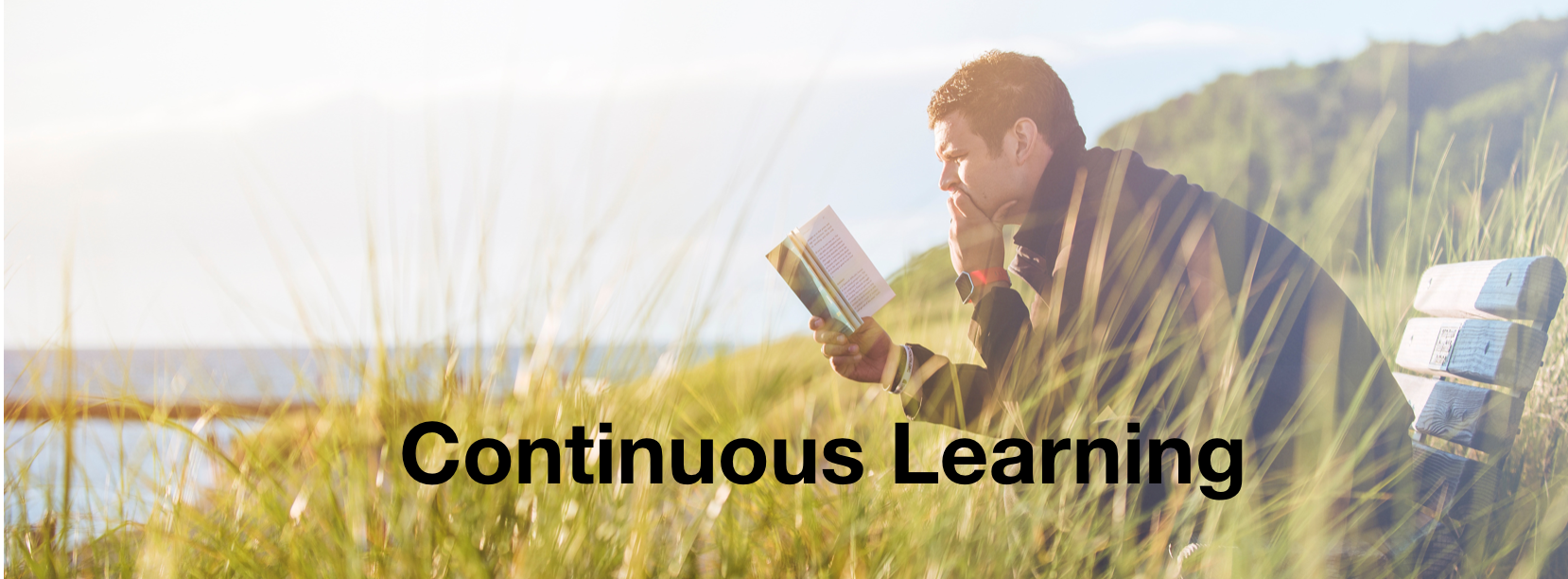Last week I was on a little break, in Tuscany, and I went, as an avid reader, packed with a number of books. And while I was reading on a nice terrace in Lucca enjoying the sun and the cappuccino I started thinking about something that had bugged me for a while now, namely the dramatic need to learn skills and applying them. Something that triggered this thought, was something I read in a Facebook group: somebody asked what the best book is to learn? And reading is a good start to learn skills, but you really only get to know the skills if you can apply them and receive feedback.
And the same is for organisations. How can we make sure that organisations keep learning and as such evolving? And how can we make sure that the organisations then implement what they learn?
It all starts with the leadership of the organisation. Leaders create the necessary conditions to becoming a learning organisation, but not just any leader. It’s the compassionate leaders that successfully create learning organisations.
Why is that?

The base to develop skills is self awareness.
Self awareness is, well, fasten your seatbelts, aware of the self. Daniel Goleman defines self awareness in his book “Emotional Intelligence” as:
“knowing one’s internal states, preference, resources and intuitions.”
Compassionate leaders not only have a high self awareness, they also have a passion and curiosity to learn. They understand they do not know everything, and they understand they can make mistakes.
Giving and receiving feedback…
The most effective leaders are the ones that create relationships and are open to receiving feedback. They want to learn from others. And it doesn’t stop here. Compassionate leaders understand that when they give feedback or input, they can be dead wrong. As we have seen in the introduction, giving and receiving feedback is a crucial component to learn skills.
They will look at their perspective, and give feedback from that perspective, knowing that their viewpoint can be skewed, that they might not have all the information, or simply that they are not qualified to give valid feedback on that specific topic.
And do not confuse vulnerability with weakness. Opening yourself up and be open to feedback takes guts. It is actually a strength and comes with many advantages.
Learning organisations give as such loads of focus on training people in how to give effective feedback, namely in a specific and constructive way. Feedback is thus given with the intention to grow together in the organisation and for the organisation.
Compare this with many leaders who think they should at all times act decisively when ‘leading’.
This is actually a normal human tendency: we try to hide our weaknesses and appear competent. However, if you want to create a safe environment, you need to open up and show your vulnerability, show you are not perfect and can make mistakes.

And this is exactly what you see then in mediocre organisations: decisive leaders and people that are afraid to give feedback to each other. The result is that people don’t learn from each other, that the organisation does not implement what they learn, and that the organisation is lacking the feedback mechanisms that increase learning by experimenting, and experimenting to innovate and increase performance.
Compassionate leaders also help giving meaning to the soft elements in a culture, that would remain otherwise fluffy. The truth is those soft elements need to become the real behaviours in a culture. And this means that those leaders need to do deep work on themselves. Being vulnerable, compassionate and humble.
The most effective leaders encourage their people to continuously develop themselves. They tell their people to look at their unique talents, invest as much time as you can in them, even if you leave their team. “This is pure selfless leadership”, says Linda Scotti, a transformational leadership coach. In other words, compassionate leaders are also selfless leaders. They know their role in their organisation, their direct environment and society, as well as the impact they can make, thanks to their role.

If we look at a few examples, then Marc Benioff immediately comes into mind. With an approval rating of close to 100% on Glassdoor, he is building a unique culture in Salesforce. He founded his company on the principle of OHANA, which is Hawaiian for family, but everybody is connected. In addition, he is a great champion on equality, and launched the famous 1-1-1 giving back initiative. Where you give 1% of your time, 1% of your equity and 1% of your products to charity. Oh, and didn’t I mention that continuous learning is central in Salesforce.com?
Another great example is Howard Schultz from Starbucks. The former Starbucks chairman and co-founder, says that leadership comes down to three traits:
“Take love, humanity, and humilityand then place it against a performance-driven organisation; these are in conflict to the naked eye.”
But he believes that performance is significantly enhanced by this kind of leadership. And they have also a spectacularly engaged workforce, one that is constantly learning, not only on how to do ‘work’ better, but also learning about the impact the partners (that is how Starbucks calls their baristas) make on the farmer communities by selling coffee.
And while we started that it all starts at the top, everybody can cultivate that leadership style in their organisation as well as in themselves, after all Blaine Bartlett concluded in “Compassionate Capitalism” the book he co-authored with David Meltzer, that:
“leadership is embodied in everyone of us; it is exerted at every level by every person in an organisation, regardless of position or title. The short version about who’s the leader responsible is this: everyone’s a leader.”
To recap, organisations should be constantly learning to obtain the necessary skills. Compassionate leaders are the best placed to create the conditions for true learning organisations. Giving and receiving feedback is equally important, taking into account the different perspectives, as it stimulates experimenting and innovating.
What will you do to become a compassionate leader and to help building a learning organisation?
I hope you enjoyed this blog, have learned something out of it… and, will apply some elements from them. As always, keep on jumping your wave of disruption!
